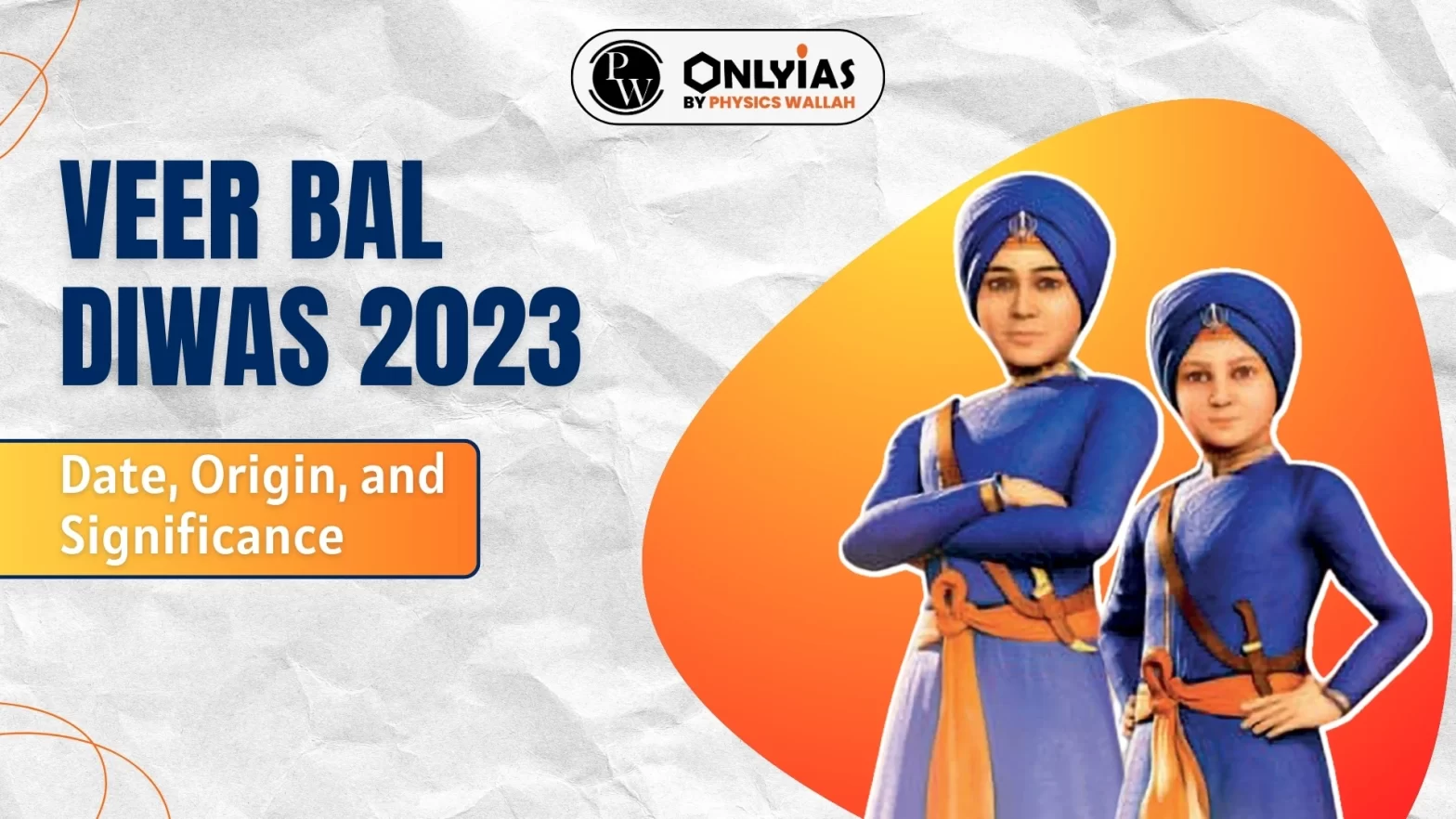Veer Bal Diwas is commemmorated to honour the martyrdom of Baba Fateh Singh and Zorawar Singh, the Sahibzade of 10th Guru Govind Singh Ji on 26th December every year.

Context: December 26 is observed as ‘Veer Bal Diwas‘ to mark the martyrdom of Guru Gobind Singh ji’s sons, Baba Zoravar Singh and Fateh Singh.
| Must Read | |
| NCERT Notes For UPSC | UPSC Daily Current Affairs |
| UPSC Blogs | UPSC Daily Editorials |
| Daily Current Affairs Quiz | Daily Main Answer Writing |
| UPSC Mains Previous Year Papers | UPSC Test Series 2024 |
December 26 is observed as 'Veer Bal Diwas' to mark the martyrdom of Guru Gobind Singh ji’s sons, Baba Zoravar Singh and Fateh Singh.
On the occasion of Veer Bal Diwas, the martyrdom of Guru’s sons is remembered, and commemorated with great vigour and very acute sadness, by the Sikh community every year.
Chaar Sahibzaade refers to the four sons of Guru Gobind Singh ji, who were martyred during the period of clashes with the Mughal Empire.
Ajit Singh and Jujhar Singh, the Vaada Sahibzaade, attained martyrdom in the battle at a tender age of 18 and 14 years respectively.
Chhote Sahibzaade refused to convert to Islam. Wazir Khan ordered them to build a brick wall around them and they attained martyrdom.
Guru Gobind Singh ji was the tenth and the last human Guru of the Sikhs.
Guru Gobind Singh ji is credited with founding the Sikh warrior community called Khalsa, which gave Sikhs a warrior identity.
The five articles of the Khalsa faith are kesh (uncut hair), kanga (wooden comb), kara (iron or steel bracelet), kirpan (dagger) and kachera (short breeches).

<div class="new-fform">
</div>
